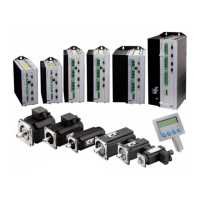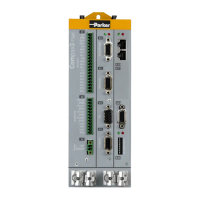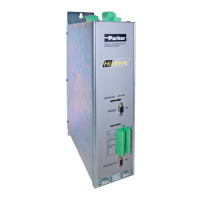Parker EME
Communication
192-120114 N5 C3I22T11 June 2008 323
Synchronizations method
Selection of the synchronization method
the selection is made via object 820.24. The selection is only accepted, if the bus
cycle time (Bus object 0x1006) is written anew. Changes of the synchronization
method and ofthe bus cycle time should only be made while the controller is deac-
tivated.
PLL synchronization (Object 820.24 = 0)
During the PLL synchronization, the system clock of the slave device is synchroni-
zed to the system clock of the master with the aid of a phase control loop. This
ensures that all devices are running in the same time frame.
Advantages: exact synchronization of the setpoint acceptance from the master,
synchronized acquisition of the actual values
Disadvantages: relatively high requirements for the periodicity of the sync-
telegram, i.e. the jitter must be small. For CANSync on Compax3, the maximum
permitted jitter is about 50µs.
Timestamp method (Object 820.24 = 1)
During the timestamp method, the slave is not synchronized to the master clock.
Instead, the time between two subsequent sync-telegrams is measured. The recei-
ved position demand values or the values derived from them (e.g. speed) are sca-
led with the measured time.
Advantages: relatively insensitive to jitter
Disadvantages: the actual value acquisition is not synchronized to the master.
This may lead to "beats".
Linear interpolation is not possible with the timestamp method.

